Japanese recipes and essentials from Julia Busuttil Nishimura's new book, Around the Table
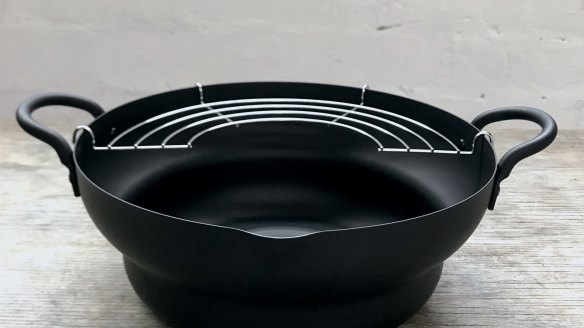
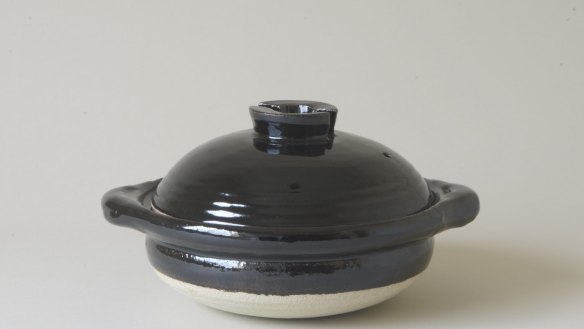
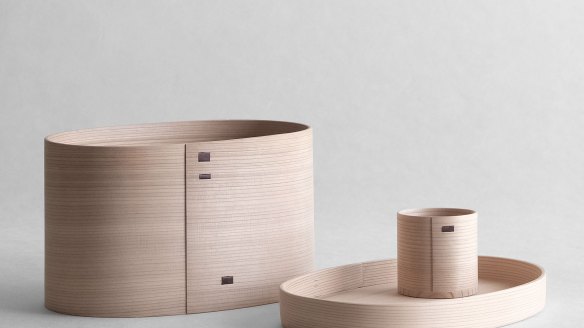
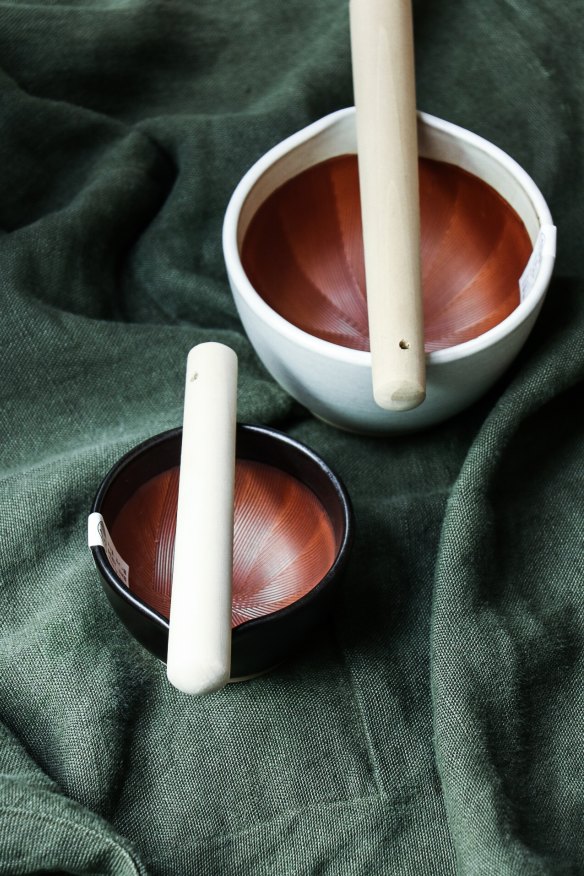
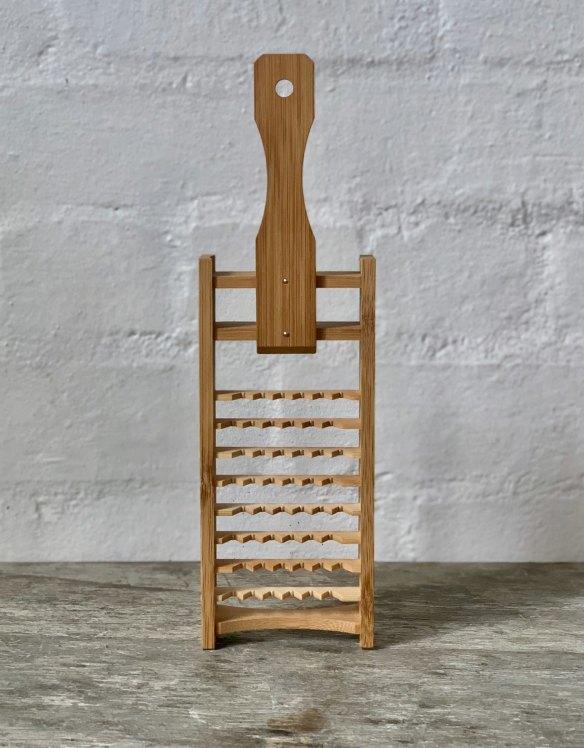
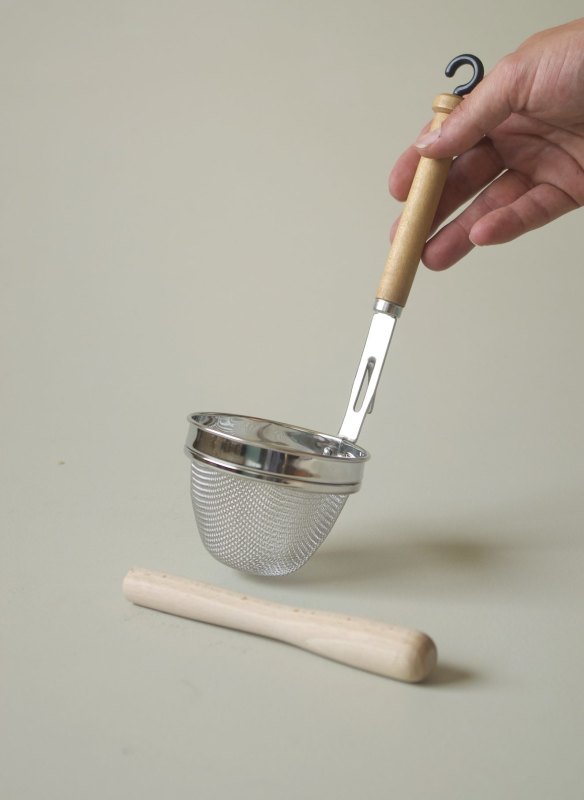
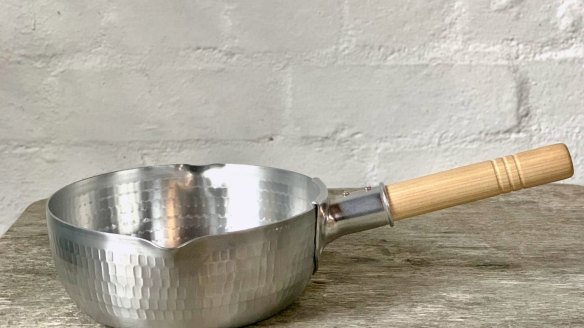
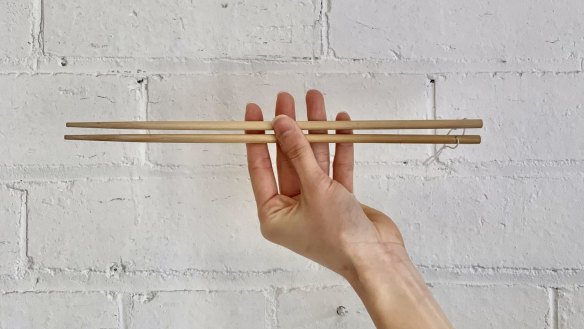
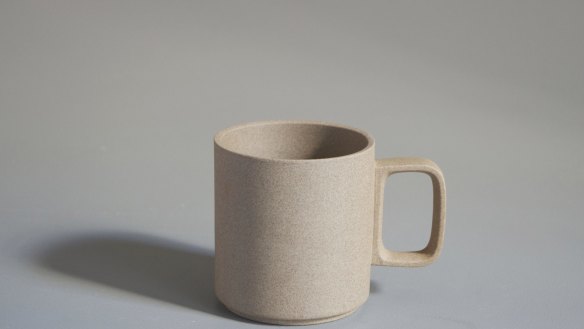

Japanese food features more prominently in author Julia Busuttil Nishimura's new cookbook. Here she shares four family-friendly recipes, kitchen kit and tips.
I can still remember the very first dish my husband Nori cooked for me – a simmered pumpkin dish called, in Japanese, kabocha no nimono. Large pieces of pumpkin were gently poached in shoyu, sake and mirin.
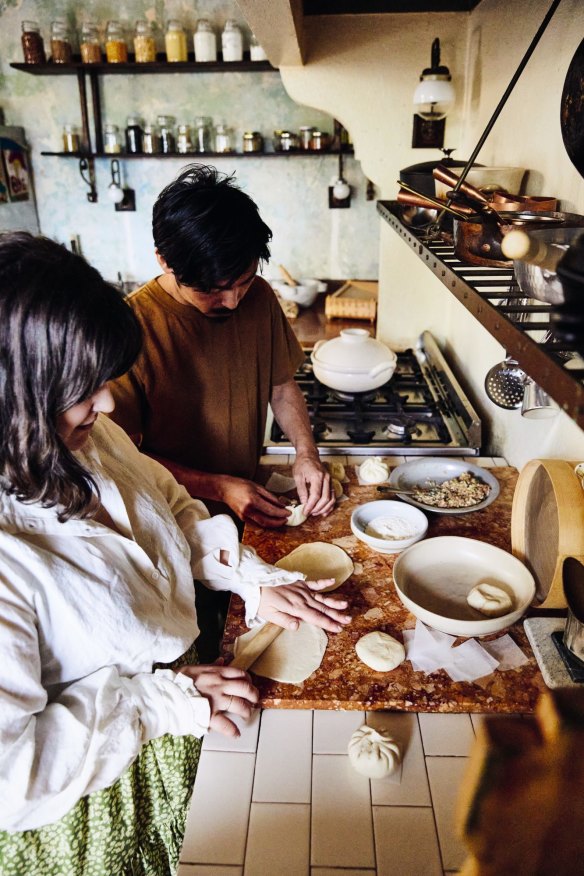
We were in our early 20s, living in a sharehouse. I was still studying at university and he was a chef at a nearby Japanese restaurant. We ate it on a red chequered blanket on the median strip with steamed rice and tempura prawns. I immediately had to write down the recipe. That was 10 years ago and I haven't stopped writing down the recipes he cooks, along with the ones we cook and create together these days.
Nori grew up on a strawberry and rice farm in the Japanese countryside between Kyoto and Nagoya. He left his family home for Australia when he was 23, and memories of food from his childhood still inspire every dish we make. I am so grateful for this connection and the new stories we have made together here in our home in Melbourne.
Now with two boys, the importance of cooking Japanese food is even more powerful. It connects them to their culture, history and family. It's a bonus that it is also incredibly delicious. Since our regular trips to Japan were curtailed by the pandemic, we all relished this comfort and connection through food.
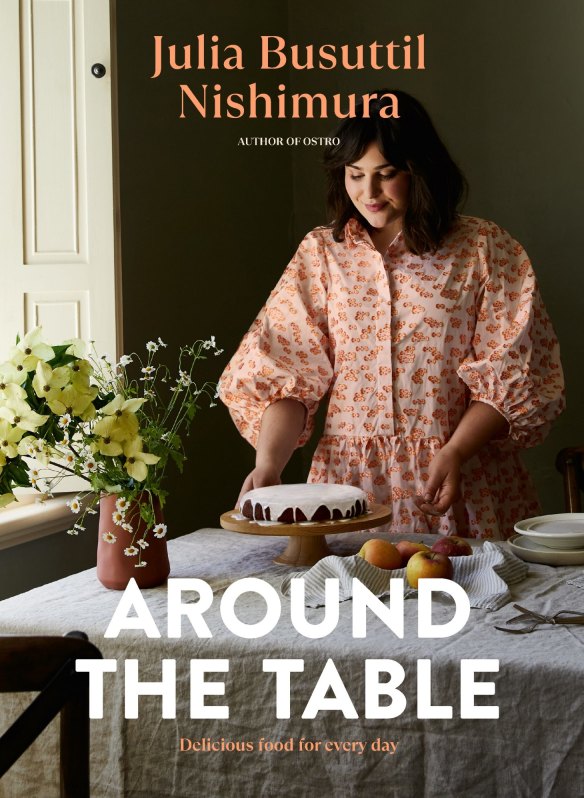
My own Mediterranean roots, which spawned a love for Italy and time spent living in southern Tuscany, have always influenced the way I cook and think about food. The common thread between the two cuisines is an emphasis on simple cooking using produce that is seasonal and as local as possible.
Since my cookbooks are always a reflection of what I cook in my own kitchen day to day and year to year, Around the Table dedicates even more space to the Japanese recipes that fill our home. From shokupan, mushroom udon and Japanese curry to agedashi dofu, each dish is something I love to make for my family.
Along the way, I've learned many tips from Nori and his family: add a pinch of sugar to the dried shiitake mushrooms as they soak to speed up the rehydration process; and that raw cabbage smeared with miso (like celery and peanut butter) is one of the best snacks in the world.
In Around the Table you won't find fancy ingredients or overly complicated techniques – that's not how I cook. It's home food – accessible and achievable and with an emphasis on finding the best quality produce, doing as little as you can to it and enjoying it with friends and family. It's joy-bringing, life-enhancing stuff.
Julia's top ingredients
My most crucial tip to cooking great Japanese food is to buy good-quality ingredients. This is so important in all cooking but I think there is something about the simplicity of Japanese cooking which really benefits from this principle.
To build a Japanese pantry, be selective with what you put on your shelves. Instead of buying a huge array of ingredients that you might not use, purchase only what you need for the dish you are making and build your store up slowly.
These are the ingredients I always have on hand:
- Kamebishi two year aged shoyu (soy): One of the absolute staples in our kitchen. I use it for cooking, dressings and marinades. Once you try really good-quality soy sauce, it's hard to use anything else. I love this particular one as it has a rich and deep flavour and its saltiness is very well-rounded. $44, thegoodgrubhub.com
- Superior white miso from Kyoto: White miso has a delicate flavour and is very versatile. It is great in marinades for chicken, mixed in with butter to top roasted sweet potatoes or in vinaigrettes. It also makes a really great miso soup, of course. $63, thegoodgrubhub.com
- Master Craftsman rice vinegar: This is my favourite rice vinegar. Mild and aromatic in flavour, it's brewed by the famous 300-year-old vinegar maker, Tobaya Suten. I use this rice vinegar when making pickles but also in marinades and dressings. $42, thegoodgrubhub.com
- Cooking sake: This sake has a really concentrated flavour since it's especially for cooking and is made from organic rice from Fukuoka and natural spring water. I use it in marinades and broths and often use it in place of white wine in recipes. $25, sakenet.com.au
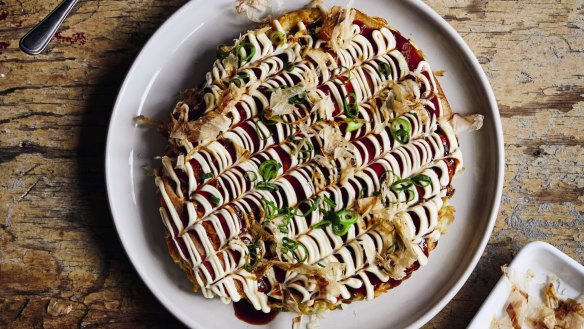
Okonomiyaki – as we like it
Okonomi means "as you like" and yaki means "fried" – so as you can imagine, there are countless variations of this savoury Japanese pancake. Nori's mum often made it with finely sliced pork belly, which is incredibly delicious. Ours has prawns and pork. Bacon rashers are a good alternative to the pork belly, too. Whatever you choose to add to your okonomiyaki, for a lightpancake be sure to stir the batter as little as possible and avoid pressing it down in the pan.
We usually make a simple dashi (stock) with shaved katsuobushi (bonito flakes), but store-bought or homemade chicken or vegetable stock is a really good alternative.
I've also suggested a way to make your own okonomiyaki sauce – it is more just a mixture of a few different sauces, but it means you can adjust the sweetness and flavour to your liking. And while Japanese Kewpie mayonnaise is readily available, okonomi sauce can be more tricky to come by, so this is a good little recipe to have up your sleeve in times of need.
INGREDIENTS
- 15g shaved katsuobushi (bonito flakes), plus extra to serve
- 360g plain flour
- 4 eggs, lightly beaten
- 500g white cabbage, shredded
- 2 spring onions, roughly sliced, plus extra to serve
- 300g raw prawn meat, roughly chopped
- sea salt and ground white pepper, to taste
- vegetable oil, for frying
- 300g finely sliced boneless pork belly
- Kewpie mayonnaise, to serve
Okonomi sauce
- 3 tbsp tomato sauce (ketchup)
- 3 tbsp Worcestershire sauce
- 2 tbsp oyster sauce
- about 1 tbsp caster sugar
METHOD
- To make the okonomi sauce, simply combine all of the ingredients and taste. If you want it a little sweeter, add a little extra sugar. Set aside.
- To make dashi, place 500ml (2 cups) of water in a saucepan and bring to the boil. Add the katsuobushi and simmer for 3 minutes.
- Remove the pan from the heat and allow the katsuobushi to steep for 5 minutes. Strain the dashi into a bowl and allow it to cool. The katsuobushi can be stored in a small container in the fridge and used to make a second, albeit weaker, dashi within a few days.
- Place 400ml of the dashi in a large bowl with the flour and mix until you have a fairly smooth batter (some lumps are more than fine). Overmixing it will develop the gluten, so mix as little as possible. Add the eggs and mix to combine, followed by the cabbage, spring onion and prawn. At this stage, I like to use my hands to mix everything, making sure that the cabbage is well coated. Season to taste with salt and white pepper.
- Heat a frying pan over high heat and add 2 tablespoons of vegetable oil. Place three slices of the pork belly side by side in the pan, then spoon in one-quarter of the cabbage mixture over the pork belly, shaping it into a rough circle without pressing it down too much. Reduce the heat to medium-low and cook the pancake for about 3-4 minutes, until just beginning to set and the underside is golden.
- Flip the pancake, cover with a lid and cook for a further 4-5 minutes, until the okonomiyaki is cooked through.
- If the pork has become a little soft, increase the heat to medium-high, flip the pancake back over so the pork is on the underside again, and cook for a further 1-2 minutes or until the pork is crispy.
- Repeat with the remaining batter and pork belly, adding more vegetable oil as needed, to make four pancakes.
- Top the pancakes with okonomi sauce and Kewpie mayonnaise, then finish with extra sliced spring onion and katsuobushi.
Serves 4
Agedashi dofu
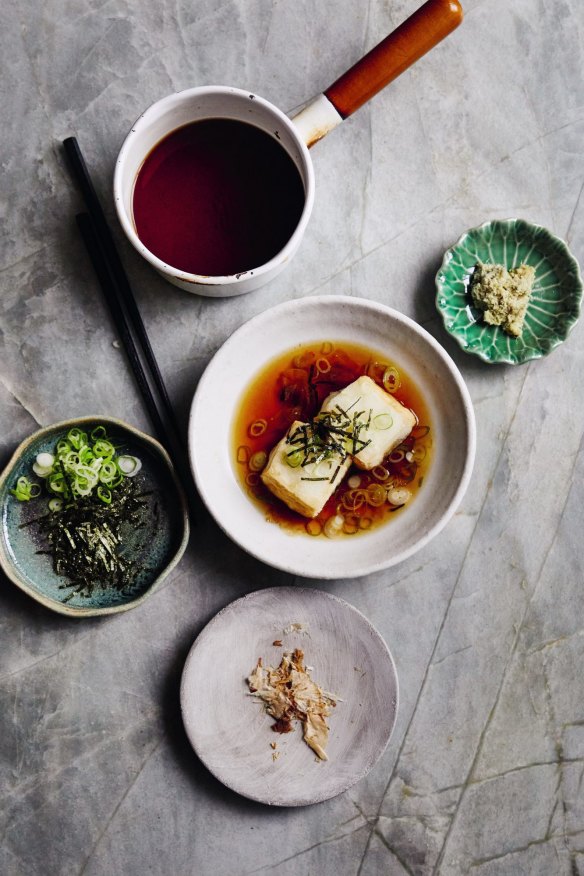
Agedashi dofu is a real family favourite of ours. It's what we make when we're all out of ideas or it's been a long day. My favourite agedashi dofu is made with silken tofu – the contrast between the fried exterior and soft interior is beautiful. But it is rather delicate to handle, so soft tofu can also be used. I love it simply topped with grated ginger and spring onion. Nori likes to add shredded seaweed and katsuobushi, too. We always eat it with plenty of steamed rice and a simple salad.
INGREDIENTS
- 500g soft or silken tofu, cut into 3.5cm cubes
- cornflour or potato starch, for dusting
- vegetable oil, for frying
- grated ginger, to serve
- finely sliced spring onion, to serve
- shaved katsuobushi (bonito flakes), to serve
- shredded nori, to serve
Tsuyu
- 10g shaved katsuobushi (bonito flakes)
- 50ml light soy sauce
- 25ml mirin
- 25ml sake
METHOD
- To make the tsuyu, first make the dashi. Bring 300ml of water to the boil in a saucepan over high heat. Add the katsuobushi, reduce the heat to a simmer and cook for 5 minutes. Strain the liquid into a bowl, then return it to the pan. The leftover katsuobushi can be stored in a small container in the fridge and used to make a second, albeit weaker, broth within a few days. Add the soy sauce, mirin and sake to the dashi and set aside.
- Pat the tofu dry with paper towel. Coat the tofu in the cornflour or potato starch, dusting off any excess. Heat 3-4cm of oil in a large saucepan or wok to about 175C. The oil is hot enough when a wooden chopstick dipped into the oil starts to sizzle.
- Working in batches, fry the tofu on all sides (for 2-3 minutes in total), until just beginning to colour. It shouldn't be golden at all. Transfer to a wire rack to drain.
- Bring the tsuyu to a simmer over medium heat. Place the tofu in a large shallow bowl and pour the tsuyu in and around the tofu.
- Top with grated ginger, spring onion, katsuobushi and shredded nori, then serve.
Serves 4
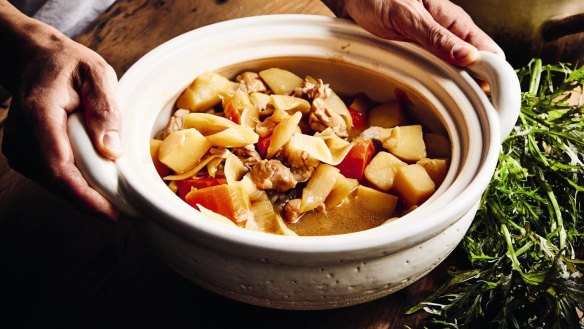
Japanese braised chicken with root vegetables
This is one of my go-to weeknight meals as it is so simple to make and loved by both my boys. Preparing your own dashi (stock) creates a wonderfully smoky base for the braise and only takes a few minutes. If you can't get your hands on dried katsuobushi (bonito flakes), simply use water instead. Often made with lotus root, burdock or konnyaku, our family's version is simplified and contains onions, carrots and potatoes.
INGREDIENTS
- 10g (1 cup) shaved katsuobushi (bonito flakes)
- 1 tbsp vegetable oil
- 650g skinless chicken thigh fillets, cut into 2cm pieces
- sea salt
- 2 onions, quartered
- 2 carrots, peeled and cut into 2cm pieces
- 2 waxy potatoes, such as nicola, peeled and cut into 2cm pieces
- 1 tbsp brown sugar, plus extra to taste
- 3 tbsp soy sauce
- 3 tbsp mirin
- 3 tbsp sake
- mizuna to serve, optional
- steamed Japanese short-grain rice (such as koshihikari), to serve
METHOD
- Bring 300ml of water to the boil in a small saucepan over medium heat. Add the katsuobushi and simmer for 5 minutes. Strain the liquid, which is now dashi, through a fine sieve into a bowl. The katsuobushi can be stored in a small container in the fridge and used to make a second, albeit weaker, dashi within a few days. Set the dashi aside while you prepare the other ingredients.
- Heat the oil in a large saucepan or flameproof casserole over high heat. Season the chicken with salt, then cook on all sides for 2-3 minutes, until golden. Add the onion and stir to coat in the pan juices, then cook for 1-2 minutes, until slightly softened. Now nestle in the carrot and potato and pour over the dashi stock that you made earlier. Reduce the heat to medium-low, cover with a lid and allow to simmer for 10 minutes.
- Remove the lid and add the sugar, followed by the soy sauce, mirin and sake. Stir to ensure that everything is well-coated. If you have one, cover with a lid that's slightly smaller than the pan this time, so it sits directly on the braised chicken and vegetables. Simmer for 15-20 minutes, until the chicken and vegetables are tender. Check for seasoning, adding salt if necessary. It should be slightly sweet too, so a little more brown sugar can be added to taste. Serve with mizuna, if using, and steamed rice.
Serves 4
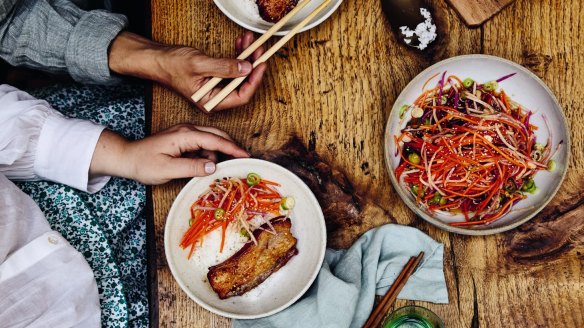
Miso chilli pork belly with daikon and carrot salad
This is such a great way to enjoy pork belly on a weeknight. It requires minimal time in the oven and you can get away with marinating the pork for a short time. You can marinate it the night before, of course, or even the morning before you want to cook it. We eat it with steamed rice and a simple salad of daikon, carrot and spring onion, with a vinegary dressing to cut through the richness of the pork belly.
INGREDIENTS
- 800g boneless pork belly
- ½-1 tsp chilli flakes
- 1 tbsp white miso
- 2 tbsp mirin
- 2 tbsp sake
- 3 tbsp light soy sauce
- 1 tbsp honey
- 1 tbsp toasted sesame oil
- 3 garlic cloves, finely grated
- 1 tsp ground white pepper
- sea salt
- steamed Japanese short-grain rice (such as koshihikari), to serve
Daikon & carrot salad
- 1 daikon, peeled and julienned
- 1 carrot, peeled and julienned
- 2 spring onions, sliced
- 2 tbsp light soy sauce
- 2 tbsp grain vinegar* (see note)
- 1 tbsp sesame oil
- 2 tsp toasted sesame seeds
- sea salt
METHOD
- Remove the rind from the pork belly and slice from the shortest side into 1.5cm thick rashers. Place in a non-reactive bowl or container, then add the remaining ingredients except the steamed rice. Use your hands to mix everything together and ensure that the pork is well-coated. Marinate for at least 30 minutes, or overnight.
- Preheat the oven to 200C fan-forced (220C conventional). Line a baking tray with baking paper. Place the pork belly rashers on the prepared tray in a single layer and pour over any excess marinade. Cook in the oven for 20 minutes or until the pork is cooked through and slightly caramelised.
- For the daikon and carrot salad, combine the daikon, carrot and spring onion in a bowl. Whisk together the remaining ingredients in a small bowl and pour over the vegetables. Toss to combine and season to taste.
- Serve the pork with the daikon and carrot salad and steamed rice.
Serves 4
*Note: Grain vinegar (kokumotsu su) is a moderately acidic Japanese vinegar made from a mixture of grains such as wheat, corn, sake lees and rice. It usually has a higher proportion of non-rice grains to be classified as a "grain vinegar". It is available from Japanese grocers and some supermarkets. If you can't find it, use rice vinegar instead, which has a higher proportion of just rice.
This is an edited extract from Around the Table by Julia Busuttil Nishimura, published by Plum, RRP $44.99, photography by Armelle Habib. Buy now
Appears in these collections
The best recipes from Australia's leading chefs straight to your inbox.
Sign up